7 Minutes
The compact SUV segment continues to heat up with the full reveal of the all-new 2026 Toyota RAV4 and the third-generation 2026 Mazda CX-5. Both crossovers are best-sellers and widely admired, yet they are distinct in design, technology, and performance, appealing to different types of drivers. If you are evaluating your next crossover purchase or simply passionate about the automotive world, this deep dive into their five most significant differences will help you decide which SUV is best suited to your needs.

Distinct Personalities: Design and Exterior Styling
When comparing the 2026 Toyota RAV4 and Mazda CX-5, their visual philosophies couldn't be more contrasting. Toyota has taken its legendary RAV4 in a bolder, more rugged direction. Emphasizing angular lines, prominent body creases, and an assertive stance, the new RAV4 radiates adventure. Trim levels like the RAV4 Woodland Edition further underline its outdoorsy appeal, featuring higher ground clearance and off-road inspired styling.
Mazda’s response is the sophisticated, curvaceous, and distinctly premium CX-5. Drawing inspiration from its Kodo design language, the third-generation CX-5 embraces flowing shapes and an upscale aesthetic. The result? A compact SUV that is as much a status symbol as it is a practical family vehicle. Each model offers its own flavor inside the cabin too: the RAV4 skews sportier—especially in the GR Sport variants with unique red-accented interiors—while the CX-5 delivers a serene, upscale environment with glossy surfaces and a clean, uncluttered look.
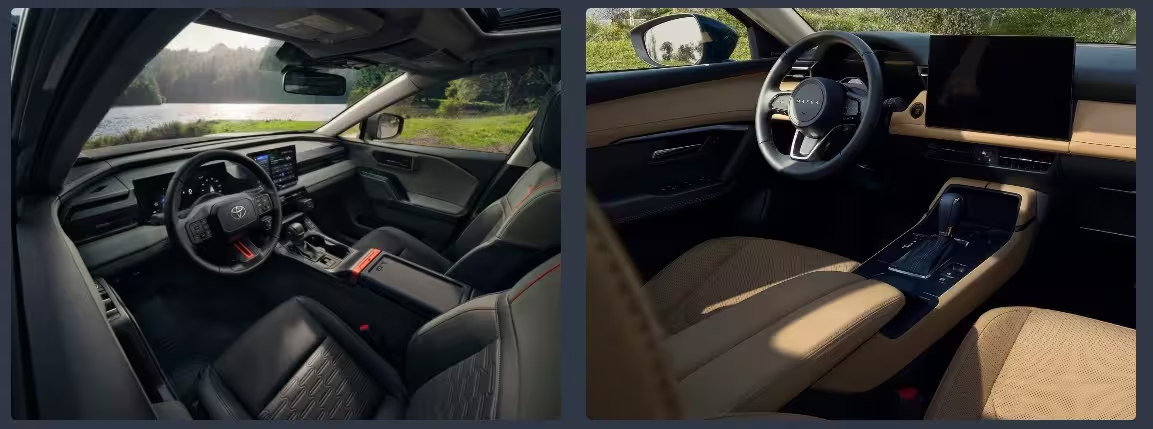
Infotainment and Interior Tech: Bigger Screens, Fewer Buttons
Technology takes a front seat in both SUVs, and the arms race continues in 2026. The Toyota RAV4 features a 10.5-inch touchscreen standard, with upper trims offering an even larger 12.9-inch display. Toyota wisely retains classic tactile controls for essentials like drive modes and climate, ensuring usability while moving toward modernity.
Mazda breaks new ground by introducing its largest touchscreen ever—a 15.6-inch system—making it the reigning champion for screen real estate in Mazda interiors. Unlike Toyota, the CX-5 eliminates nearly all physical buttons, except for three below the display to handle hazard and defrost functions. Gone is the familiar rotary controller, a significant shift for Mazda, which was previously resistant to touch interfaces. Overall, Toyota favors operational simplicity, while Mazda focuses on a minimalist, premium cabin experience.
Infotainment System Features:
- RAV4: 10.5–12.9-inch touchscreens, physical climate and drive buttons, Toyota’s Arene system
- CX-5: 15.6-inch touchscreen (largest in its class), almost fully digital controls, Google Built-In
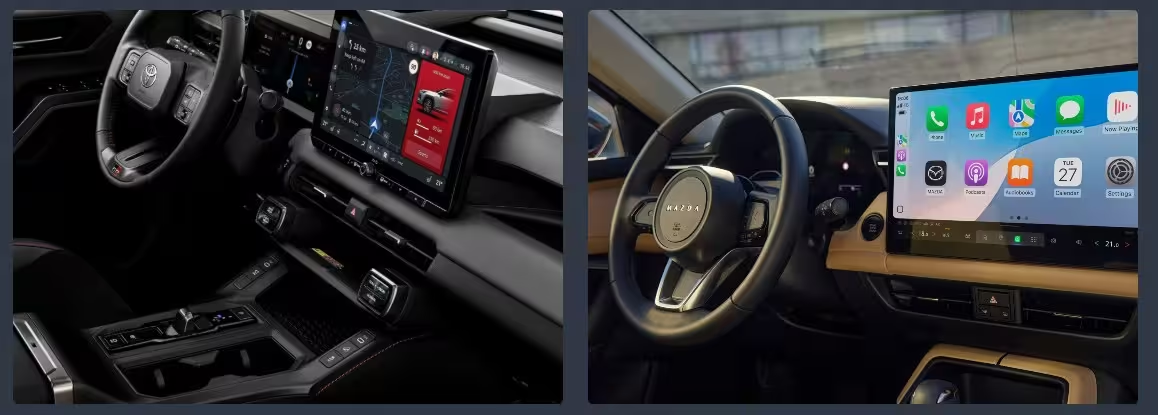
Software Innovations: Toyota Arene vs. Google Built-In
Setting new standards for connected driving, each SUV gets a high-tech software update. The 2026 RAV4 debuts Toyota’s next-generation Arene platform, offering advanced voice commands, an intuitive home button interface, seamless Apple CarPlay and Android Auto, plus enhanced safety features through Toyota Safety Sense 4.0.
Mazda’s CX-5, meanwhile, comes loaded with Google Built-In across the lineup. This allows access to Google Assistant, navigation, apps, and smart tools like Google Gemini AI. Integration with the Google Play Store brings a vast world of entertainment and productivity apps directly to the center screen.
In summary, Toyota’s Arene focuses on convenience and safety, while Mazda integrates the power of Google for a smart, always-connected user experience.
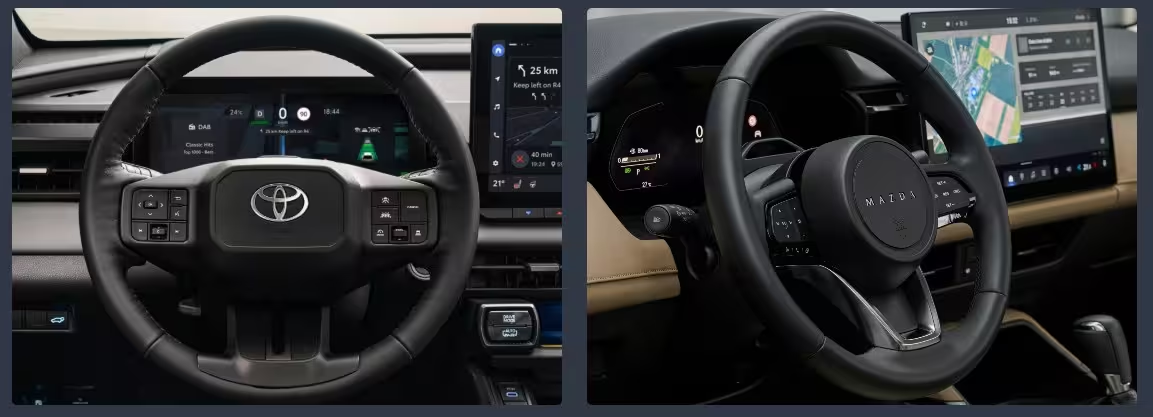
Powertrain and Performance: Hybrid Dominance or Driving Joy?
Under the hood, the 2026 Toyota RAV4 marks a shift: Every model is now hybrid-only. The standard setup is a 2.5-liter four-cylinder hybrid producing 226 horsepower (FWD) or 236 hp (AWD). Upper trims up the ante with a plug-in hybrid RAV4 Prime boasting 320 hp and 50 miles of electric-only range—positioning it among the fastest and most efficient non-luxury SUVs on the market.
Mazda, by contrast, starts with a traditional 2.5-liter four-cylinder engine generating 187 hp and 185 lb-ft of torque. While this may seem modest next to the RAV4’s hybrid credentials, Mazda provides standard all-wheel drive and its signature six-speed automatic transmission, promising a more engaging drive. For 2027, Mazda plans to introduce a conventional hybrid—not a plug-in—targeting power levels that meet or exceed the current CX-5 Turbo (256 hp). Until then, the RAV4 offers swifter performance and greater electrification.
Key Powertrain Specifications:
- RAV4: Hybrid (226–236 hp), Plug-in Hybrid (320 hp, 50-mile EV range)
- CX-5: Non-hybrid 2.5L (187 hp), AWD standard, Hybrid coming 2027
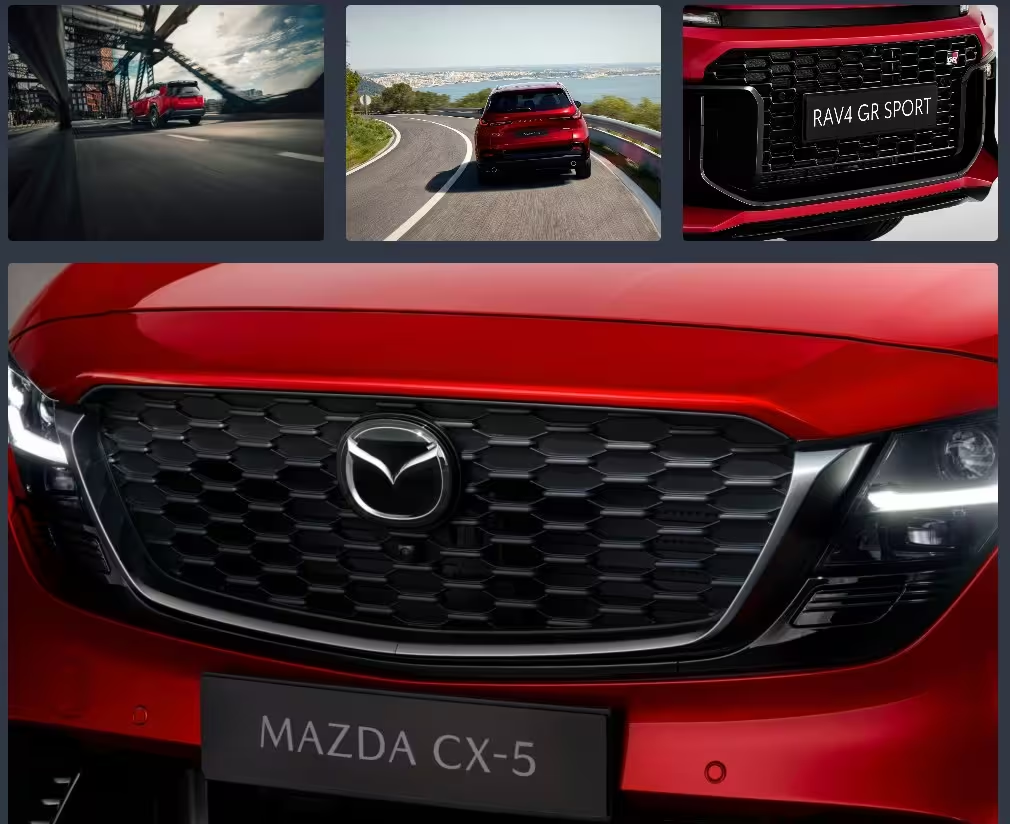
Market Positioning: Adventure Meets Luxury
The new Toyota RAV4 is doubling down on its reputation for rugged versatility and eco-conscious engineering. Especially with models like the Woodland Edition—complete with raised ride height, all-terrain tires, and distinctive Rigid Industries LED lighting—the RAV4 is ready for light off-road duty and outdoor escapades. Toyota joins competitors like Honda’s TrailSport and Subaru’s Wilderness in offering lifestyle-oriented trims for adventure seekers.
On the other hand, Mazda positions the CX-5 as a premium urban SUV. Without an off-road variant (that’s the CX-50’s specialty), Mazda focuses on delivering a high-tech, luxurious, and refined experience for drivers seeking an upmarket daily driver. Expect upper trims to come fully loaded with quality materials and the latest features, targeting discerning buyers who want comfort, style, and connectivity above all.
Interior Comfort, Space, and Usability
Inside, both crossovers aim to impress, but with contrasting priorities. The RAV4’s more utilitarian, sporty layout favors intuitive operation and durability—appealing to families and drivers prioritizing function. Mazda, meanwhile, leans into elegance: soft-touch surfaces, minimalist design, and a sense of tranquility echo what you’d find in premium brands. The trade-off for Mazda’s style-focused cabin may be slightly less user-friendly controls, as most functions move to the touchscreen interface.
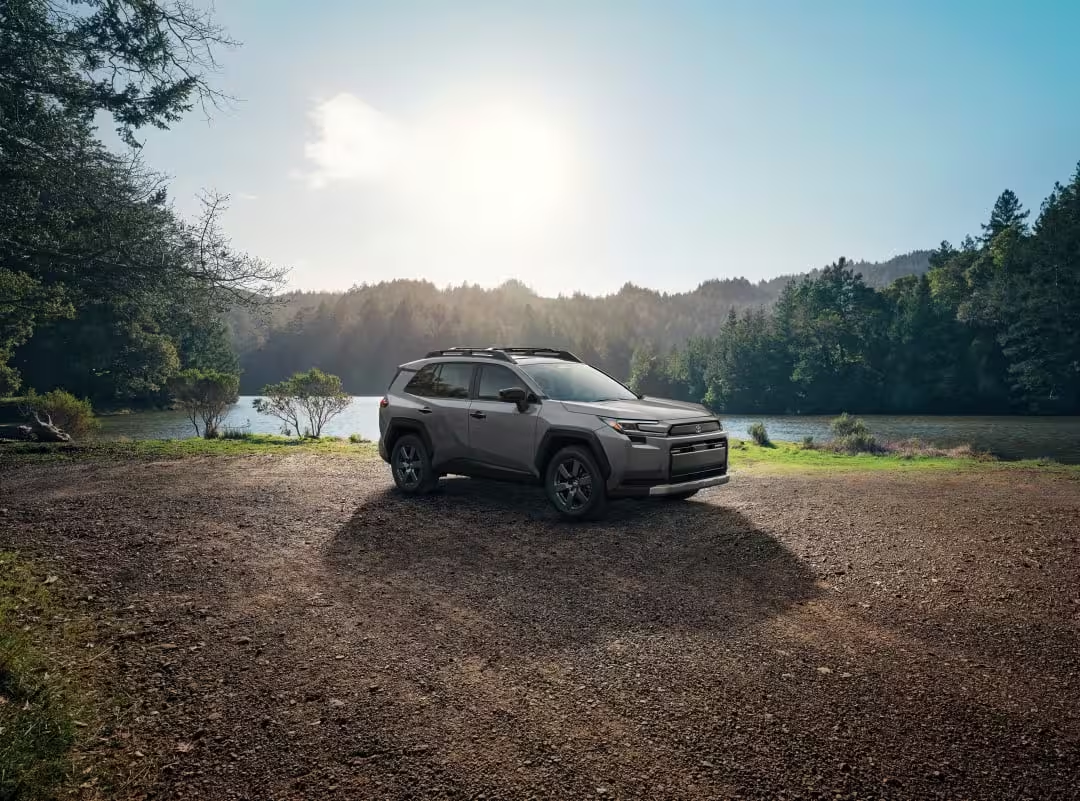
Final Thoughts: Which Compact SUV Should You Choose?
The 2026 Toyota RAV4 and Mazda CX-5 encapsulate two very different interpretations of what a compact crossover should be. Toyota steps boldly into an electrified and adventurous future, offering standard hybrid powertrains, a performance-oriented plug-in hybrid, and off-road-capable trims. Mazda, meanwhile, redefines sophistication and tech, turning the CX-5 into one of the most luxurious and visually striking vehicles in its class—despite lagging behind Toyota in electrified choices, at least for now.
For eco-conscious adventurers and those demanding the latest in hybrid performance, the new Toyota RAV4 sets the benchmark. For urban drivers and style seekers who put a premium on interior design, technology, and a refined ride, the Mazda CX-5 is clearly a top contender. As both models hit showrooms (with the RAV4 arriving first, followed by the CX-5 in early 2026), competition in the compact SUV segment has never looked more exciting for car buyers and automotive enthusiasts alike.
Source: autoblog


Leave a Comment